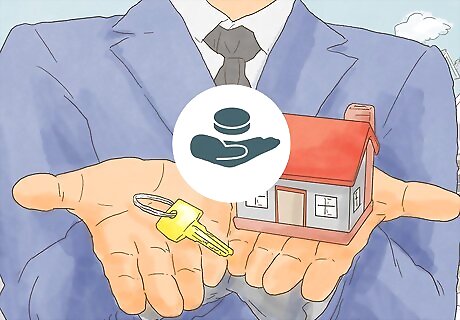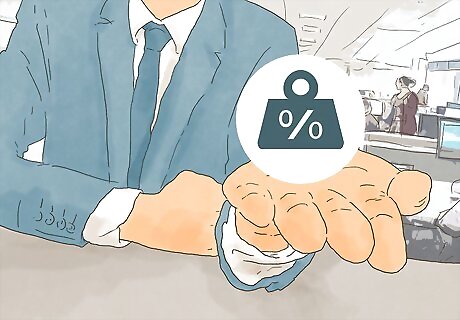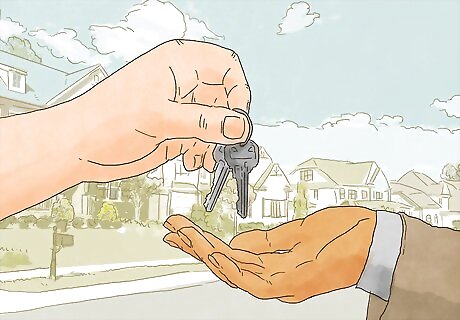
views
Determining Type Of Lien

Analyze situations that may result in a lien being filed. A lien is a security interest placed on property. A security interest means that the property serves as security for a debt you owe to another party. The property may be real property (home) or personal property (car, jewelry). When you purchase a home, you enter into a home mortgage. Your bank takes a security interest in your home, which is considered real property. If you don’t make the required mortgage loan payments, the bank can recover the amount they loaned you by taking possession of your home and selling it. Assume that you buy a car and take out a car loan. The bank will take a security interest in your car. Just as with your home, the bank can potentially take possession of your car and sell it. The sale proceeds allow the bank to recover the amount that they loaned to you. Lenders incur huge costs to repossess a home or a car. In reality, most banks would rather work out a repayment plan with a borrower and avoid repossessing property. One possibility for removing a lien is to renegotiate your loan balance. That may include a lower monthly payment, a reduction in the interest rate or a longer period to repay the loan.

Review the concept of a tax lien. A tax lien is a process performed by the Internal Revenue Service (IRS). This type of lien is placed because of an unpaid tax debt. A tax lien provides public notice to all of your creditors that the IRS has a claim against all of your current and future property until you pay the debt. The IRS considers a tax lien as a last resort when they are attempting to collect taxes owed. Because of the cost and time to place a lien, the IRS may be willing to enter into an installment agreement. With an installment agreement, the taxpayer agrees to make specific payments on an unpaid tax debt over time. As long as the payments are made on time, the IRS will not file a tax lien. If you cannot pay your current tax liability, it’s critically important to contact the IRS. You can explain your situation and ask about an installment agreement. A tax lien can have a big impact on your financial situation. The lien will hurt your credit rating and may prevent you from borrowing money. Also, a tax lien will not be discharged if you file bankruptcy. For details on filing bankruptcy, see: File Bankruptcy in the United States. It’s important to avoid a tax lien, and to take steps to get the lien removed.

Consider liens that are the result of a court order. A lien placed on your home or car is considered voluntary. The borrower understands that placing the lien is part of the loan agreement. Other loans are involuntary. A lien filed as a result of a court order is an involuntary lien. In involuntary lien is filed based on a judgment granted by a judge. A property lien against your home can originate from a divorce or child support judgment. In this case, an individual has been instructed by a court to make payments and has not done so. If you have had work completed on your home and the contractor accuses you of failure to pay all fees, the contractor can file a mechanic's lien against your property. In most cases, you will need to retain an attorney to help you get a court ordered lien removed. An attorney can help ensure that the legal paperwork is processed correctly.
Removing A Lien

Consider your options for removing a lien on property. Since most liens are based on some monetary amount, the simple way to remove a lien is to pay that specific amount. There are other ways to remove a lien, depending on how the lien originated. Sell the property. In some cases, you may be able to find a buyer for the property. However, selling property with a lien can be complicated. The lender who placed the lien will still have a security interest in the property, even if it is sold. The buyer must be informed that there is a lien on the property. Return the property to the lien holder. A lien can’t be placed on property that you own. If you simply give the property to the lien holder, the lien is void. Say, for example, that you own a truck. There is a lien on the truck based on the outstanding truck loan balance. If you give the truck to your lender, the lien on the truck goes away. If you feel that the lien was obtained based on fraud, duress or some other unlawful means, you can obtain a court order to have the lien removed. This option is expensive and time-consuming. You’ll need to hire an attorney to help you with the court filing.

Remove a lien on your car. The lien against your car is based on the remaining loan balance. When your lender places the lien, it noted on the car title and your insurance policy. This notation is made so that any future buyer of your car is aware of the lien. A car lien is paid off with the final monthly car payment. After you have paid off your car loan, request a letter from the lender that states you have fulfilled your obligation. Take the letter to your local Department of Motor Vehicles (DMV). The DMV will issue you a new title that lists you as the sole owner of the vehicle. After you receive your new car title, contact your insurance company to have the lien holder removed from your policy. Keep copies of the letter releasing you from the lien and your new car title.

Go over the details to remove a lien from your home or other property. You can pay off a property lien by paying the remaining loan balance. If you negotiated a different repayment amount, you can remove the lien by paying that amount in full. You will need to pay or resolve any lien related to a divorce settlement, child support payments, or any other creditors. Request a release-of-lien form from your lender. The lender signs this form as evidence that the lien should be removed. You can get this required form from your lender, your attorney of your local government. Get the release-of-lien form notarized. File the form with your county recorder's office. Your county recorder keeps track all the property owners in your county, and any related liens on property. The office may require a filing fee. This will make the release of your lien public. Keep a copy of the release-of lien for your personal records. An attorney can help you remove a lien from your property if you disagree with the existence of the lien or any details related to the lien. An attorney will assist you in researching the origins of the claim and negotiate final payment if you are responsible for the debt. When you pay a tax lien amount in full, the IRS will provide you with a release of the notice of federal tax lien about 30 days after you pay off your tax debt. You will forward that letter to your county recorder’s office to remove a lien on property.


















Comments
0 comment